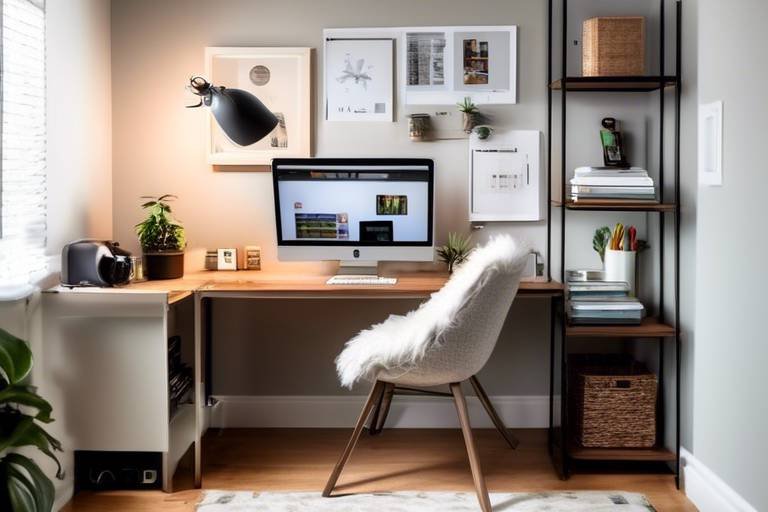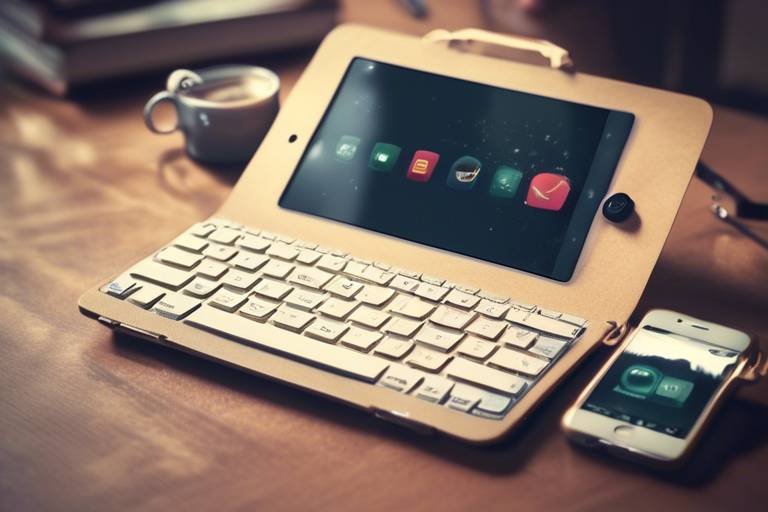How to Create a Smart Home Office Setup
Working from home has become increasingly popular, and having a smart home office setup is essential for productivity and comfort. Let's explore the key aspects to consider when setting up your home office to ensure a conducive work environment.
First and foremost, choosing the right location within your home is crucial. Look for a spot with ample natural light, minimal distractions, and enough space to set up your workspace comfortably. Proper lighting is essential to reduce eye strain and boost productivity, so consider positioning your desk near a window or investing in a good desk lamp.
When it comes to furniture and setup, prioritize ergonomic solutions. An ergonomic chair that supports your back and promotes good posture, along with a desk at the right height to prevent strain on your wrists and neck, are key components of a healthy workspace. Additionally, ensure your monitor is positioned at eye level to reduce neck strain.
Organizational tools and storage are essential for keeping your home office clutter-free and efficient. Invest in storage solutions such as shelves, filing cabinets, and desk organizers to keep your workspace tidy. Digital tools like cloud storage and task management apps can also help streamline your workflow.
Integrating technology into your home office setup can greatly enhance your productivity. Consider using smart devices like voice assistants, smart plugs, and wireless chargers to automate tasks and simplify your workday. Ensure reliable wireless connectivity to avoid interruptions during virtual meetings and online collaborations.
Creating the right ambiance in your home office is key to fostering a productive environment. Choose a color scheme that promotes focus and creativity, and add personal touches like plants, artwork, and motivational quotes to make the space your own. Good lighting, both natural and artificial, can significantly impact your mood and energy levels throughout the day.
Establishing boundaries and routines is crucial when working from home. Communicate your work hours to family members to minimize interruptions, and create a daily schedule to stay organized and maintain work-life balance. Setting clear boundaries between work and personal time is essential for your well-being.
Implementing green practices in your home office setup not only benefits the environment but also creates a healthier workspace. Opt for energy-efficient devices, use sustainable materials for furniture and decor, and incorporate recycling and waste reduction practices into your daily routine.
Regular maintenance and upgrades are necessary to ensure your home office setup remains functional and conducive to productivity. Check your equipment regularly for wear and tear, update software and hardware as needed, and make adjustments to your workspace layout to optimize comfort and efficiency.
By following these guidelines and customizing your home office setup to suit your preferences and work style, you can create a smart and efficient workspace that enhances your productivity and overall well-being.

Choosing the Right Location
When it comes to creating a smart home office setup, one of the crucial decisions you'll need to make is choosing the right location within your home. The location of your home office can significantly impact your productivity and overall work experience. It's essential to select a spot that offers a balance of functionality, comfort, and minimal distractions.
First and foremost, consider a location with ample natural light. Natural light not only boosts your mood and energy levels but also reduces eye strain and enhances focus. Position your workspace near a window to take advantage of natural light throughout the day. Additionally, ensure that the lighting in the room is adequate for working, incorporating task lighting if necessary.
Another factor to consider is the level of noise and distractions in the chosen location. Avoid high-traffic areas or spaces with frequent interruptions. If possible, set up your home office in a quiet corner or room where you can concentrate without disruptions. Noise-canceling headphones can also be a valuable addition to create a peaceful work environment.
Furthermore, think about the layout and size of the space. Your home office should have enough room to accommodate essential furniture, equipment, and storage solutions comfortably. Consider the flow of the space and ensure that you can move around freely without feeling cramped. A clutter-free and well-organized workspace can enhance your efficiency and creativity.
Lastly, personalize your home office location to reflect your style and preferences. Add elements that inspire and motivate you, such as plants, artwork, or meaningful decor. Creating a space that resonates with you can boost your morale and make working from home a more enjoyable experience.
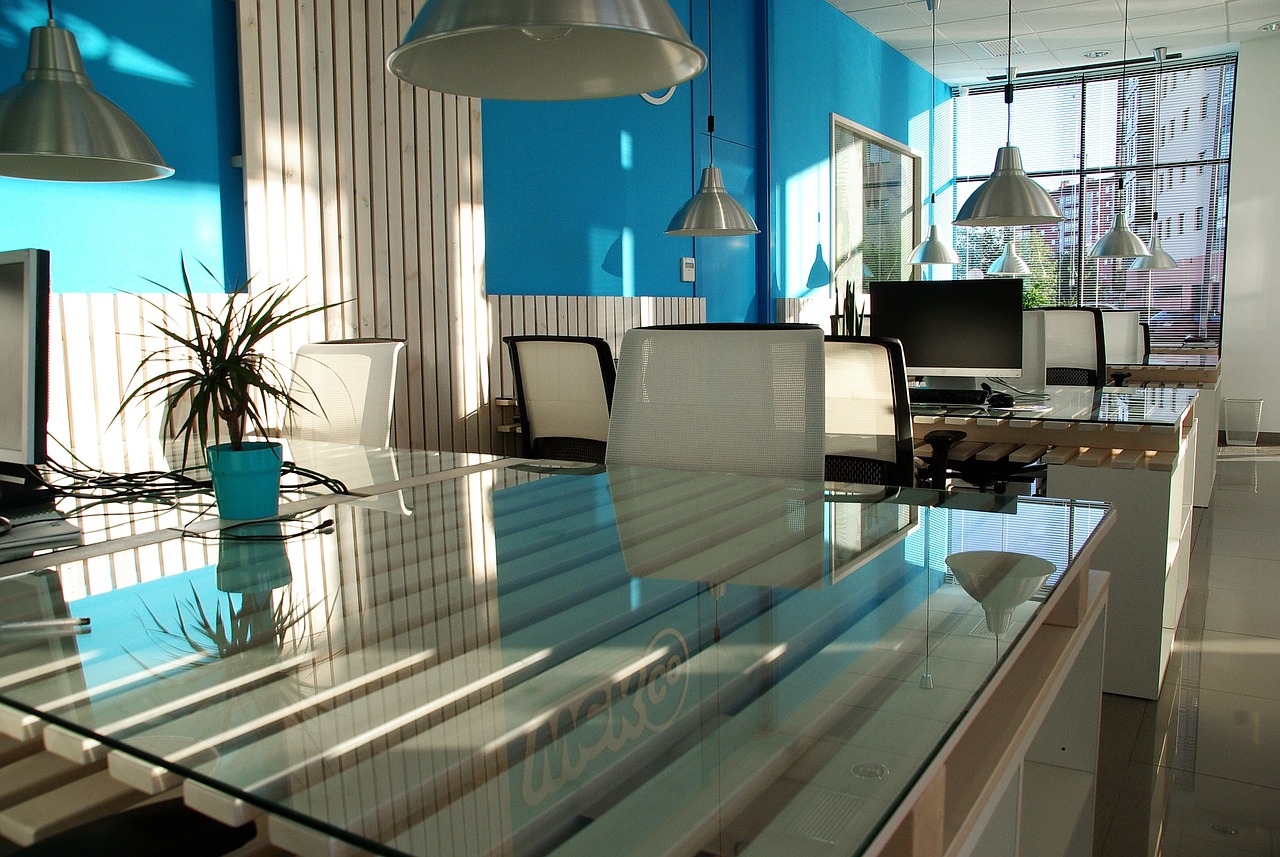
Ergonomic Furniture and Setup
When it comes to setting up a smart home office, one of the key factors to consider is the ergonomics of your furniture and setup. Your comfort and health are directly impacted by the furniture you choose and how you arrange it in your workspace. Investing in ergonomic chairs and desks is essential to prevent strain on your body during long work hours. These chairs are designed to support your posture and reduce the risk of back pain or other musculoskeletal issues.
Additionally, the positioning of your monitor is crucial for reducing eye strain and neck pain. Make sure the top of your monitor is at or slightly below eye level, and the screen is an arm's length away from you. This setup helps maintain a comfortable viewing angle and prevents unnecessary strain on your neck and eyes.
Consider investing in a height-adjustable desk that allows you to switch between sitting and standing positions throughout the day. Alternating between sitting and standing can improve circulation, reduce fatigue, and increase productivity. A well-thought-out ergonomic setup is not only beneficial for your physical well-being but also enhances your overall work performance.
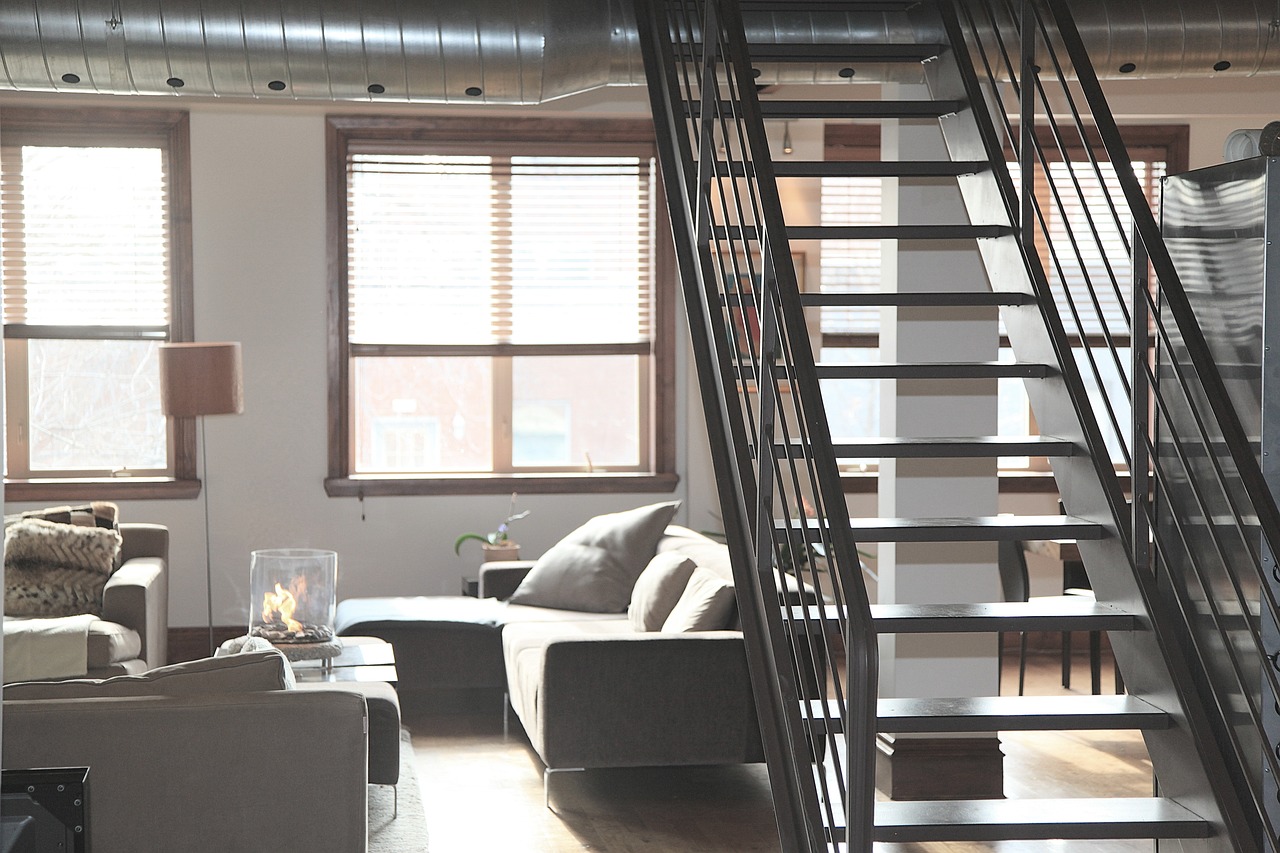
Organizational Tools and Storage
When it comes to setting up a productive home office, having the right organizational tools and storage solutions is key to maintaining efficiency and reducing clutter. A well-organized workspace can help you stay focused and on track with your tasks without feeling overwhelmed by a chaotic environment.
One essential organizational tool for your home office is a filing system that allows you to categorize and store important documents and paperwork. Whether you prefer physical file folders or digital storage options, having a designated place for all your files can save you time and frustration when you need to locate specific information.
In addition to traditional filing systems, consider incorporating storage solutions such as shelves, cabinets, or storage bins to keep your office supplies, books, and other materials neatly arranged and easily accessible. Utilizing vertical space can maximize storage capacity while keeping your workspace visually appealing and free of clutter.
For digital organization, take advantage of productivity tools like project management software, cloud storage services, and digital calendars to streamline your workflow and keep track of deadlines and appointments. These tools can help you stay organized, collaborate with team members, and manage your tasks more effectively.
When setting up your home office, think about the layout and placement of your organizational tools to create a functional and ergonomic workspace. Position frequently used items within arm's reach to minimize unnecessary movement and optimize your efficiency throughout the day.
Remember, a well-organized home office not only enhances your productivity but also contributes to a sense of calm and focus in your work environment. By investing in the right organizational tools and storage solutions, you can create a space that supports your work goals and inspires creativity.

Optimizing Technology Integration
When it comes to creating a smart home office setup, optimizing technology integration plays a crucial role in enhancing productivity and efficiency. By seamlessly incorporating smart devices, wireless connectivity, and automation tools into your workspace, you can streamline tasks and simplify your workflow.
One key aspect of optimizing technology integration is ensuring that your devices work harmoniously together. This involves setting up a reliable wireless network to support seamless connectivity and communication between your computer, printer, and other gadgets. Additionally, investing in smart devices such as voice-controlled assistants or smart lighting systems can further enhance the functionality of your home office.
Moreover, automation tools like scheduling software and task management apps can help you stay organized and on top of your workload. By automating repetitive tasks and setting reminders for important deadlines, you can free up valuable time and focus on more critical aspects of your work.
Another essential consideration in technology integration is data security. Implementing robust cybersecurity measures, such as encryption software and secure password protocols, is crucial to safeguarding sensitive information and preventing data breaches in your home office environment.
Furthermore, staying up to date with the latest technological advancements and software updates is essential for optimizing your home office setup. Regularly updating your devices and software ensures that you have access to new features, improved performance, and enhanced security measures.
In conclusion, optimizing technology integration in your smart home office setup is essential for maximizing productivity, efficiency, and convenience. By strategically incorporating smart devices, automation tools, and robust cybersecurity measures, you can create a technologically advanced workspace that supports your professional endeavors.

Lighting and Ambiance
When it comes to creating a smart home office setup, one crucial aspect that often gets overlooked is the importance of lighting and ambiance. The right lighting can significantly impact your productivity, mood, and overall well-being while working from home. Additionally, creating a comfortable and inviting ambiance in your workspace can help boost creativity and motivation.
Proper lighting is essential for reducing eye strain and fatigue. Natural light is the best option, so if possible, position your desk near a window to take advantage of daylight. If natural light is limited, consider investing in high-quality LED desk lamps with adjustable brightness and color temperature settings to mimic natural light throughout the day.
Ambiance plays a significant role in setting the tone for your work environment. Choose colors that promote focus and relaxation, such as shades of blue and green. Adding plants not only enhances the visual appeal of your workspace but also improves air quality and reduces stress levels. Consider incorporating personal touches like artwork or inspirational quotes to create a space that reflects your personality and motivates you to stay productive.
Creating a balance between task lighting, ambient lighting, and accent lighting can help you customize the atmosphere based on your work requirements and preferences. Task lighting, such as a desk lamp, illuminates specific work areas, while ambient lighting, like overhead lights or floor lamps, provides overall brightness. Accent lighting, such as LED strips or decorative lights, adds a touch of style and warmth to your workspace.
Remember that lighting and ambiance are not just about functionality but also about creating a space where you feel comfortable and inspired. Experiment with different lighting setups and decor elements to find what works best for you. By paying attention to these details, you can transform your home office into a productive and enjoyable workspace that boosts your efficiency and creativity.

Personalizing Your Workspace
Working from home offers many benefits, but creating a productive and inspiring workspace is essential for success. In this article, we will explore various aspects of setting up a smart home office that promotes efficiency, comfort, and creativity.
Personalizing your workspace is crucial for creating a home office that reflects your personality and motivates you to work effectively. Adding personal touches, such as family photos, favorite artwork, or inspirational quotes, can make your workspace feel welcoming and inspiring. Consider incorporating plants to bring a touch of nature indoors and boost your mood. Additionally, organizing your desk with items that spark joy and creativity can enhance your overall work experience.
Furthermore, choosing the right color scheme for your workspace can have a significant impact on your productivity and mood. Opt for colors that promote focus and relaxation, such as blues and greens, while avoiding overly bright or distracting hues. Experiment with different decor elements, such as rugs, curtains, or wall art, to create a harmonious and visually appealing environment.
When personalizing your workspace, think about what elements make you feel comfortable and motivated. Whether it's a favorite mug for your coffee breaks or a cozy throw blanket for chilly days, incorporating these small details can make a big difference in how you feel while working from home.
Remember, your home office is a reflection of your unique style and preferences, so don't be afraid to get creative and make it a space where you enjoy spending time and being productive.
Have questions about setting up your smart home office? Check out these common FAQs for more guidance:
- How can I create a productive workspace at home?
- What are some tips for maintaining work-life balance in a home office?
- How can I incorporate green practices into my home office setup?
Creating a productive workspace at home involves choosing the right location, investing in ergonomic furniture, organizing your space efficiently, and personalizing it to suit your needs and preferences.
To maintain work-life balance in a home office, establish clear boundaries with family members, set a schedule, take regular breaks, and prioritize self-care and relaxation.
You can incorporate green practices into your home office setup by using energy-efficient devices, recycling and reducing waste, choosing sustainable materials for furniture, and implementing eco-friendly habits in your daily routine.

Establishing Boundaries and Routines
Working from home has become a common practice nowadays, and having a well-designed home office can significantly impact your productivity and overall work experience. In this article, we will explore various aspects of creating a smart home office setup that is conducive to efficiency, comfort, and inspiration.
When working from home, it's crucial to establish clear boundaries and routines to maintain a healthy work-life balance. One effective way to do this is by setting specific work hours and communicating them with your family members. This helps create a dedicated work environment and minimizes distractions during work hours.
Additionally, creating a daily routine that includes breaks, exercise, and time for relaxation can enhance your productivity and well-being. By structuring your day with set tasks and time blocks, you can stay focused and maintain a sense of accomplishment.
Furthermore, designating a specific area in your home solely for work can help signal to your brain that it's time to focus. This physical boundary between your work and personal space can improve concentration and productivity.
Implementing rituals like starting the day with a cup of coffee or taking a short walk before beginning work can also help establish a routine and transition into a work mindset. These small rituals can act as cues to your brain that it's time to shift gears and focus on work.
Moreover, setting boundaries with family members or housemates regarding interruptions during work hours is essential. Clearly communicate your availability and establish rules to minimize disruptions, ensuring a conducive work environment.
1. How can I maintain a work-life balance while working from home?
2. What are some effective ways to avoid distractions in a home office setup?
3. How can I create a productive routine for my work-from-home days?
4. What are the benefits of setting boundaries with family members in a home office environment?
5. How can I incorporate breaks and relaxation into my work-from-home schedule?
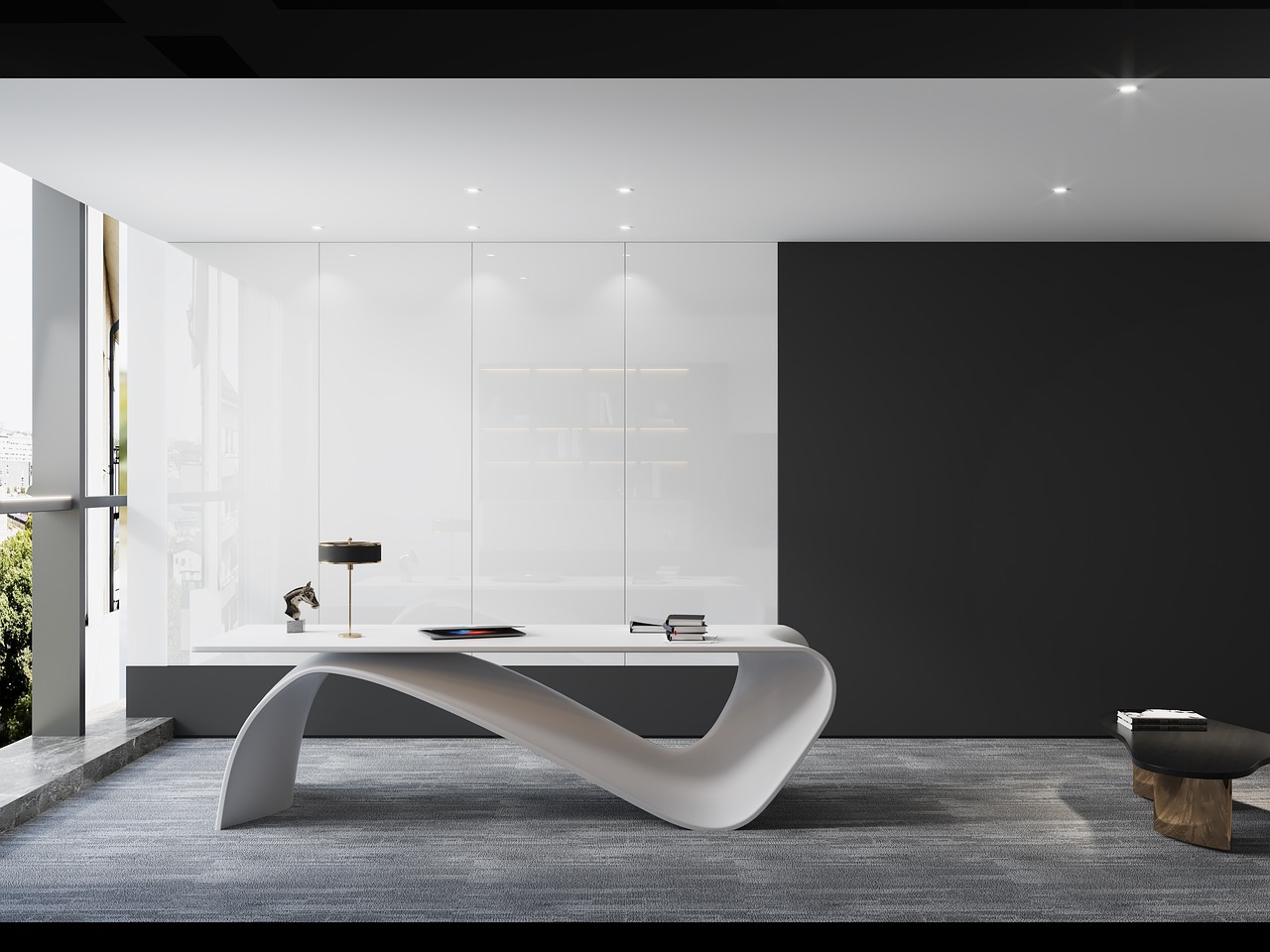
Incorporating Green Practices
When it comes to creating a smart home office setup, incorporating green practices is not only beneficial for the environment but also for your well-being and productivity. By implementing eco-friendly practices and using energy-efficient devices, you can reduce your carbon footprint and create a sustainable workspace that promotes a healthy work environment.
One way to incorporate green practices in your home office is by choosing sustainable materials for your furniture and decor. Opt for furniture made from recycled or reclaimed materials, such as desks and chairs crafted from sustainable wood or bamboo. Additionally, consider using non-toxic paints and finishes to reduce indoor air pollution and create a healthier workspace.
Another important aspect of green practices in a home office is energy efficiency. Make sure to use energy-efficient devices, such as LED lighting and smart power strips, to reduce electricity consumption. Consider setting up your office near natural light sources to minimize the need for artificial lighting during the day, further reducing energy usage.
Implementing a recycling and waste management system in your home office is also crucial for promoting sustainability. Set up designated recycling bins for paper, plastic, and other recyclable materials, and make sure to properly dispose of electronic waste. Consider going paperless whenever possible and opt for digital storage solutions to reduce paper usage.
When selecting office equipment and electronics, look for products with energy-saving features and certifications, such as ENERGY STAR. These devices are designed to consume less energy and operate more efficiently, helping you save on electricity costs while reducing your environmental impact.
By incorporating green practices into your smart home office setup, you can create a workspace that is not only environmentally friendly but also conducive to productivity and well-being. Making small changes, such as using sustainable materials, reducing energy consumption, and implementing recycling practices, can have a significant impact on the sustainability of your home office.
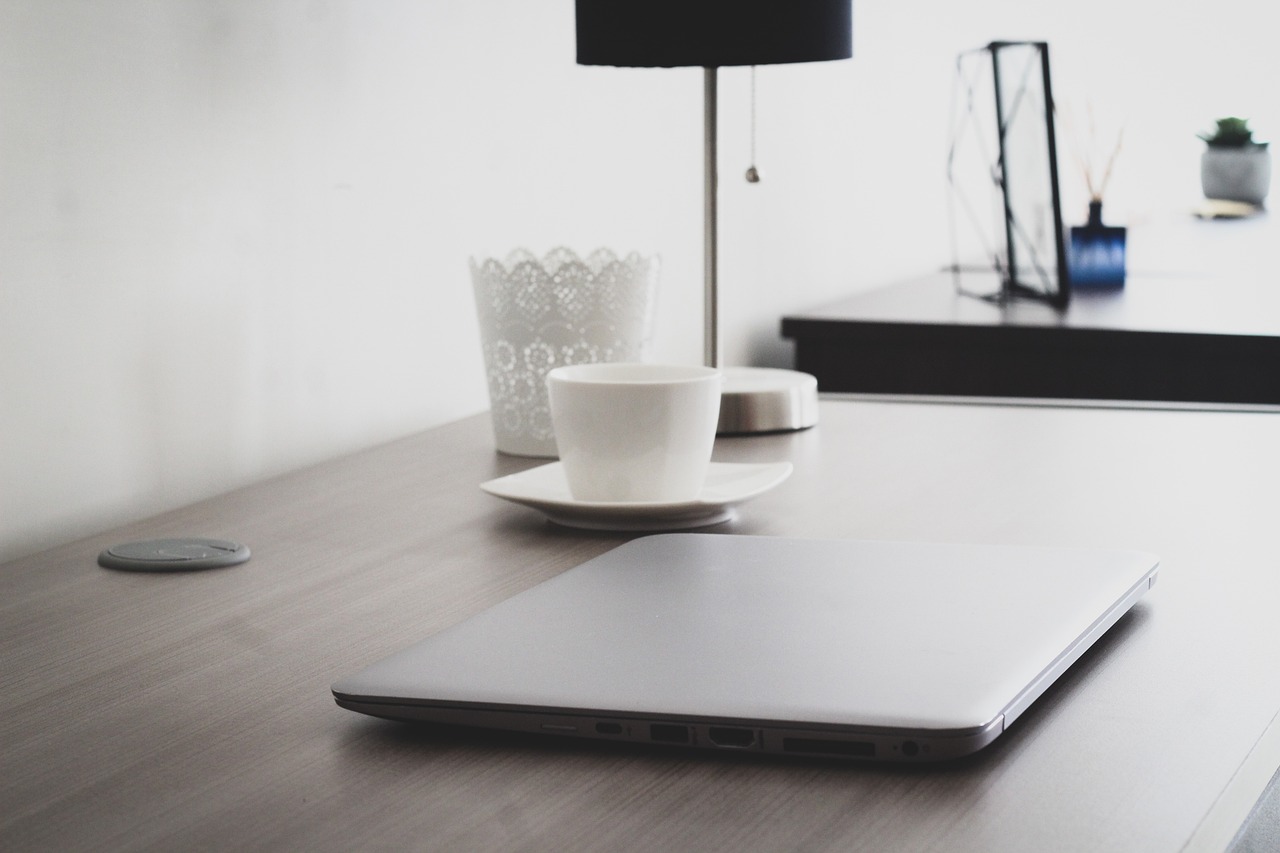
Maintaining and Upgrading Your Setup
Once you have set up your smart home office, it is essential to maintain and upgrade your setup regularly to ensure optimal functionality and productivity. Regular maintenance not only prolongs the lifespan of your equipment but also enhances your overall work experience. Here are some tips to help you keep your home office in top shape:
1. Cleaning and Organizing: Regularly clean your workspace to remove dust and clutter. Organize your files, supplies, and equipment to maintain a tidy and efficient environment. Consider using storage solutions such as shelves, cabinets, or desk organizers to keep everything in its place.
2. Check for Updates: Keep your software, apps, and devices up to date to ensure they are functioning properly and securely. Set up automatic updates where possible to stay current with the latest features and security patches.
3. Ergonomic Adjustments: Evaluate your ergonomic setup periodically to ensure that your chair, desk, and monitor are positioned correctly to support good posture and reduce the risk of strain or injury. Make adjustments as needed to maintain a comfortable and healthy workspace.
4. Upgrade Technology: Stay informed about new technology trends and consider upgrading your devices or software to improve efficiency and performance. Invest in tools that align with your work requirements and help streamline your tasks.
5. Evaluate Workspace Layout: Periodically reassess the layout of your home office to optimize space utilization and workflow. Consider rearranging furniture, adjusting lighting, or adding new elements to enhance functionality and comfort.
6. Backup and Security: Implement regular data backups to protect your work files and information from potential loss or damage. Ensure that your home office setup is secure by using strong passwords, encryption, and reliable antivirus software.
7. Sustainability Practices: Incorporate sustainable practices into your home office by using energy-efficient devices, recycling materials, and reducing paper waste. Consider eco-friendly alternatives for your office supplies and equipment.
8. Professional Maintenance: Schedule professional maintenance for complex equipment such as printers, routers, or HVAC systems to ensure they are functioning optimally. Consult experts for advice on upgrades or repairs when needed.
By following these maintenance and upgrading practices, you can create a smart home office setup that is not only efficient and productive but also sustainable and enjoyable to work in.
Frequently Asked Questions
- What are the key factors to consider when choosing the right location for a home office?
When selecting a location for your home office, it is essential to consider factors such as natural lighting, minimal distractions, and proximity to necessary amenities. Choosing a spot with good natural light can boost productivity and mood, while minimizing distractions can help you focus better on your work tasks.
- Why is ergonomic furniture important for a home office setup?
Ergonomic furniture such as chairs, desks, and monitor stands are crucial for maintaining proper posture, reducing strain on your body, and preventing long-term health issues. Investing in ergonomic furniture can significantly improve your comfort and productivity while working from home.
- How can organizational tools and storage solutions benefit a home office?
Organizational tools and storage solutions play a vital role in keeping your home office clutter-free, promoting efficiency, and helping you stay organized. By implementing filing systems, digital tools, and storage solutions, you can optimize your workspace and enhance your workflow.
- What are the advantages of integrating smart devices and automation tools in a home office?
Integrating smart devices and automation tools can streamline tasks, improve connectivity, and enhance productivity in a home office environment. From smart lighting systems to voice assistants, these technologies can simplify your work processes and make your workspace more efficient.
- How can one personalize their home office space effectively?
Personalizing your home office with plants, artwork, motivational elements, and personal touches can create a welcoming and inspiring environment. Adding elements that resonate with you can boost creativity, motivation, and overall satisfaction with your workspace.
- What are some tips for establishing boundaries and routines in a home office?
Setting boundaries with family members, creating a work schedule, and maintaining a healthy work-life balance are essential for a successful home office setup. Establishing clear boundaries and routines can help you separate work from personal life and improve overall productivity.

